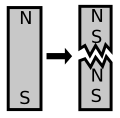Schwinger parametrization is a technique for evaluating loop integrals which arise from Feynman diagrams with one or more loops. Using the well-known...
1 KB (237 words) - 19:12, 26 July 2022
done very efficiently using the Schwinger parametrization. For example, in order to derive the Feynman parametrized form of 1 A 1 . . . A n {\displaystyle...
7 KB (1,889 words) - 02:33, 5 October 2024
model, the standard model of Big Bang cosmology Feynman parametrization Schwinger parametrization Solid modeling Dependency injection Hughes-Hallet, Deborah;...
7 KB (888 words) - 19:44, 23 October 2022
model Schwinger parametrization Schwinger representation Schwinger reversed-phase coupler Schwinger variational principle Schwinger's quantum action principle...
829 bytes (65 words) - 15:06, 25 October 2024
Feynman diagram (redirect from Schwinger representation)
Ernst Stueckelberg and Hans Bethe and implemented by Dyson, Feynman, Schwinger, and Tomonaga compensates for this effect and eliminates the troublesome...
94 KB (16,038 words) - 14:03, 21 October 2024
Schwarzschild radius Schwinger's quantum action principle Schwinger function Schwinger limit Schwinger model Schwinger parametrization Schwinger–Dyson equation...
32 KB (3,248 words) - 12:19, 30 July 2024
who received the Nobel Prize in Physics in 1965 jointly with Julian Schwinger and Shin'ichirō Tomonaga. Bethe–Feynman formula Feynman's algorithm Feynman–Kac...
1 KB (109 words) - 13:18, 1 January 2023
Feynman received the Nobel Prize in Physics in 1965 jointly with Julian Schwinger and Shin'ichirō Tomonaga. Feynman developed a widely used pictorial representation...
127 KB (14,512 words) - 20:54, 27 October 2024
Magnetic monopole (redirect from Dirac-Zwanziger-Schwinger quantization condition)
the group element is 1 + iAμdxμ which implies that for finite paths parametrized by s, the group element is: ∏ s ( 1 + i e A μ d x μ d s d s ) = exp ...
75 KB (8,386 words) - 03:02, 28 September 2024
{(x-y)^{2}}{\mathrm {T} }}-\alpha \mathrm {T} }\,d\mathrm {T} .} This is the Schwinger representation. Taking a Fourier transform over the variable (x − y) can...
86 KB (14,267 words) - 21:56, 22 September 2024




